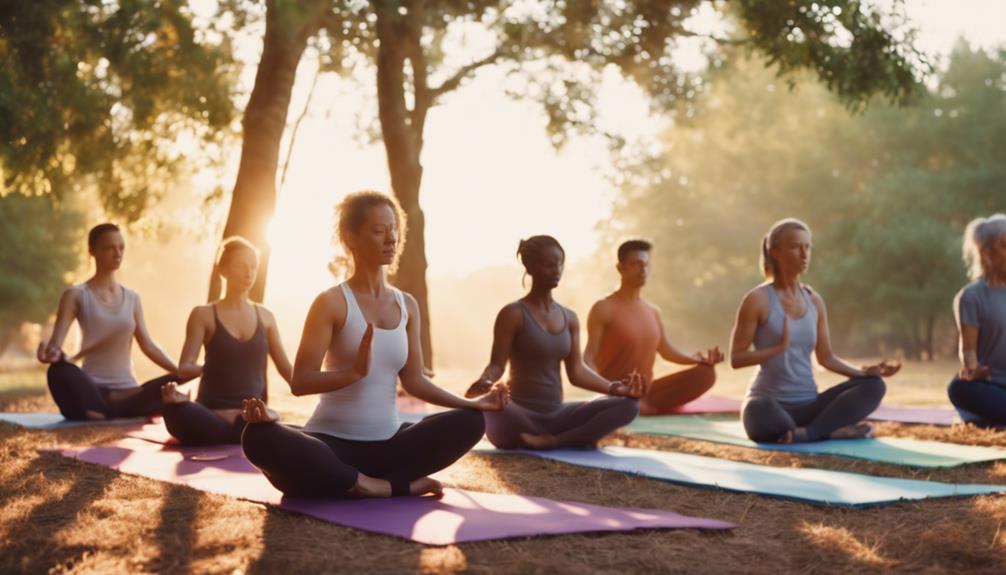What Are Yoga Positions Called

Yoga is a holistic practice that combines physical postures, breathing techniques, and mindfulness to promote overall well-being. One of the most fascinating aspects of yoga is the variety of positions, commonly referred to as “asanas.” In this article, we will delve into the world of yoga positions, exploring their names, benefits, and how they contribute to a balanced practice. Whether you are a beginner or an experienced yogi, understanding yoga positions is essential to fully appreciating this ancient discipline.
The Importance of Yoga Positions in Practice
Yoga positions, or asanas, are the foundation of any yoga practice. Each asana is designed to enhance physical strength, flexibility, and balance while also promoting mental clarity and relaxation. The diversity of yoga positions allows practitioners to tailor their practice to their individual needs, whether that means building strength, increasing flexibility, or simply finding a moment of peace in their busy lives. By understanding what yoga positions are called and their purposes, practitioners can make informed choices about their yoga routines, leading to a more fulfilling experience.
Popular Yoga Positions and Their Names
There are numerous yoga positions, each with its own name and significance. Some of the most popular yoga positions include:
1. Downward-Facing Dog (Adho Mukha Svanasana): A fundamental position that stretches the entire body while strengthening the arms and legs.
2. Warrior I (Virabhadrasana I): This position builds strength in the legs and opens the hips while improving focus and stability.
3. Tree Pose (Vrksasana): A balance position that enhances concentration and strengthens the legs.
4. Child’s Pose (Balasana): A restorative position that promotes relaxation and gently stretches the back and hips.
Related Posts:
These positions are just a glimpse into the vast world of yoga asanas. Each one offers unique benefits and can be modified to suit different skill levels.
The Benefits of Practicing Various Yoga Positions
Practicing a variety of yoga positions can yield numerous physical and mental benefits. Physically, yoga positions can enhance flexibility, build strength, improve posture, and increase balance. Mentally, engaging in a yoga practice that incorporates different asanas can reduce stress, improve mood, and promote a sense of calm. Research has shown that regular yoga practice can even help alleviate symptoms of anxiety and depression. The holistic approach of incorporating both physical and mental elements makes yoga a powerful tool for overall well-being.
How to Choose the Right Yoga Positions for Your Practice
When selecting yoga positions for your practice, it’s important to consider your individual goals and skill level. Beginners may benefit from focusing on foundational positions like Cat-Cow (Marjaryasana-Bitilasana) and Mountain Pose (Tadasana) to build strength and confidence. Intermediate and advanced practitioners can explore more complex asanas such as Crow Pose (Bakasana) or Handstand (Adho Mukha Vrksasana) to challenge their abilities. Additionally, it’s crucial to listen to your body and modify positions as needed to prevent injury and ensure a positive experience.
The Role of Breath in Yoga Positions
Breath is an integral aspect of yoga practice, especially when performing various yoga positions. Inhale and exhale techniques help practitioners connect with their bodies and maintain focus. For example, deep inhalations can be used to prepare for a position, while exhalations can help deepen the stretch. This synchronization of breath and movement not only enhances the physical benefits of yoga but also promotes a sense of mindfulness and presence. Understanding the connection between breath and yoga positions is essential for a well-rounded practice.
Common Mistakes to Avoid While Practicing Yoga Positions
As with any form of exercise, there are common mistakes that practitioners may encounter when performing yoga positions. One of the most frequent errors is using improper alignment, which can lead to discomfort or injury. It’s essential to pay attention to body alignment and make adjustments as necessary. Additionally, rushing through poses or neglecting to breathe properly can diminish the benefits of the practice. To avoid these mistakes, consider working with a qualified instructor or utilizing online resources that emphasize correct form and technique.
Exploring Advanced Yoga Positions for Experienced Practitioners
For those who have mastered the basics, exploring advanced yoga positions can be an exciting way to deepen your practice. Advanced asanas like Scorpion Pose (Vrschikasana) or Lotus Pose (Padmasana) require strength, flexibility, and focus. These positions can provide a sense of accomplishment and further challenge your body and mind. However, it’s crucial to approach advanced positions with caution and to practice under the guidance of a qualified teacher to ensure safety and proper technique.
Incorporating Yoga Positions into Your Daily Routine
Incorporating yoga positions into your daily routine can be a transformative practice. Even just a few minutes of stretching and mindfulness can significantly impact your physical and mental well-being. Consider setting aside time each day to practice a series of yoga positions, focusing on different areas of the body or specific goals. Whether it’s a morning routine to energize your day or a calming evening practice to unwind, making yoga a part of your daily life can lead to lasting benefits.
In conclusion, understanding yoga positions, or asanas, is essential for anyone interested in enhancing their yoga practice. From the foundational poses to more advanced positions, each asana offers unique benefits that contribute to physical strength, flexibility, and mental clarity. By being mindful of your practice, choosing the right positions, and incorporating breath, you can create a fulfilling yoga experience that supports your overall well-being. Whether you are a beginner or an experienced yogi, embracing the diversity of yoga positions can lead to a deeper understanding and appreciation of this ancient practice.Does Bikram Yoga Help You Lose WeightYoga For Anxiety And Stress